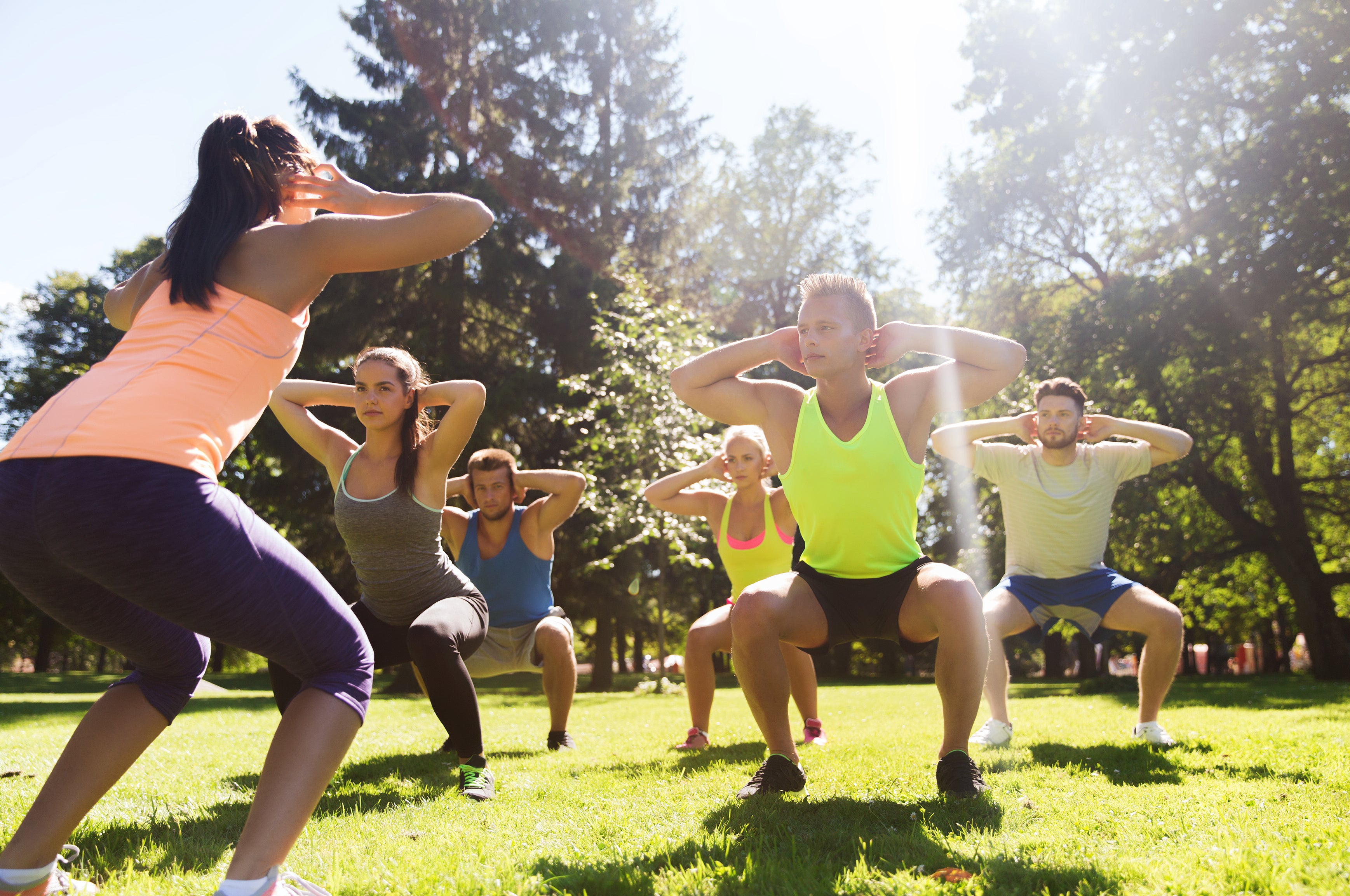
6 Tips To Exercising Outdoors In The Heat
That doesn’t mean exercising outdoors in the summer is out of the equation. In the current COVID-19 climate we remain living in it’s important to make sure that we continue to move our bodies and get in the weekly exercise recommendations needed for optimal health.
With gym closed in many states throughout the summer, exercising outdoors is the alternative fitness enthusiasts are going to keep their gains and mental sanity, socialize with others, and stay connected to their community.
Many gyms and instructors are taking their workouts outdoors. But with high temperatures and extreme humidity some days it’s important to listen to our bodies and know what to do when working out the summer outside.
1. Stay Out Of The Sun
The bight shining sun is what we want all summer long, but when it comes to working out outdoors, limit exposure. Use the following tips:
- Workout On Cooler Days: Plan workouts in advance based on which days of the week have cooler temperatures if possible. “Cooler” might mean 87 instead of 97 degrees but that’s a major difference when exercising.
- Exercise Early In The Morning: Despite rising before the kids are awake or just a few hours after your twenty-something-year-old friends go to bed, working out outside in the morning can still be a challenge when it comes to the heat. The earlier the better before the sun is out in full force. Instructors should hold classes from 6 a.m. to 8 a.m. so that hour-long classes are finished before the hottest part of the day.
- Or In The Evening: Motivation fades throughout the day, but those who aren’t early risers should skip a mid-day workout for an evening one. Once the sun goes down, it’s immediately cooler out. Plus a summer sweat session at sundown has great views!
- Take Shade: Instructors should hold outdoor classes in the shade or at least have a part of the park, field, or school track that is shaded. On those days where heat is a major factor, being in the shade makes a world of difference.
2. Drink More, And More Water

It’s important to replace the water that is released via sweat when working out. And when it’s hot, we sweat even more.
Heat and humidity directly influence body temperature and heart rate. The heart is hard at working pumping to spread oxygenated blood to the muscles when working out. Then add the challenge of the heat and it needs to work even harder.
The body also needs to regulate core temperature. So the exerciser sweats more. This means the loss of electrolytes and sodium.
Dehydration and heat exhaustion are extremely serious. Always take breaks throughout the outdoor workout in the heat to sip on water. If needed, take a break and catch your breath. Even performing exercises that are done all the time like squats can have the fitness lover out of breath in the heat. Remember the body is working out hard and working hard. Be mindful to the following cues:
- Loss in sweat
- Headache
- Dizziness
- Extreme thirst
- Confusion
These are all signs of dehydration.
Signs of the more severe heat exhaustion are:
- Fatigue
- Muscle cramps
- Rapid pulse
- Cool skin
- Goosebumps/Chills
- Nausea
- Increase in sweat
- Loss of thirst
3. Keep It Short
Limit the time exercising outdoors. Workouts should be an hour or less.
Of course, there is an exception such as endurance athletes like runners or cyclists who need long mileage as part of their training. These athletes need to make sure their bodies have properly acclimated to the heat, which generally takes about a week or two when running for an hour each time.
4. Practice At Home
A great way to prepare for those hot workouts is to exercise at home mimicking similar conditions. Run on the treadmill with an extra layer of clothes. Check out a hot yoga class or turn off the air conditioner and do a strength and/or cardio workout without cool air on. Turn on a humidifier to see how it feels to workout in dry air.
These are great tips to do before spring turns into summer, but can be done before stating that outdoor workout class.
5. Know What Not To Wear
Do not wear black or other dark colors when working out in the heat. Instead, think light and airy. Now is the time to wear activewear with breathable fabric. Wear shorts, not leggings and a tank top opposed to long sleeves.
But make sure to put on the sunscreen. Wear a hat or a visor to protect your face. Sunglasses and lip balm are also summer workout accessories needed. Bring a change of shirt to change into after the workout so that travel home in the A/C isn’t too much post sweaty workout.
6. End With A Cool Down
Since the heart rate is up, it’s extremely important not to skip that cool down. Strength and cardio workouts should conclude with some static stretches and deep breathing exercises.
Child pose to downward dog, cat and cow, neck flexion, lateral shoulder stretch, hip flexor stretch, and quad stretch is an example of a five-minute cooldown that will relax the muscles, slow heart rate, and return the body to its resting state.
Without a cool down the exerciser is more likely to overheat, feel dizzy, and fatigued.






